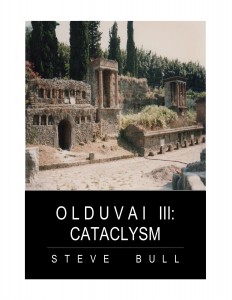Home » Posts tagged 'limits to growth' (Page 4)
Tag Archives: limits to growth
MIT Predicted in 1972 That Society Will Collapse This Century. New Research Shows We’re on Schedule.
MIT Predicted in 1972 That Society Will Collapse This Century. New Research Shows We’re on Schedule. A 1972 MIT study predicted that rapid economic growth would lead to societal collapse in the mid 21st century. A new paper shows we’re unfortunately right on schedule. IMAGE: GETTY A remarkable new study by a director at one of […]
The American infrastructure, ancient Rome and ‘Limits to Growth’
The American infrastructure, ancient Rome and ‘Limits to Growth’ Infrastructure is the talk of the town in Washington, D.C. where I now live and with good reason. The infrastructure upon which the livelihoods and lives of all Americans depends is in sorry shape. The American Society of Civil Engineers 2021 infrastructure report card gives the United States […]
What If Preventing Collapse Isn’t Profitable?
What If Preventing Collapse Isn’t Profitable? The real downside of the green-profit narrative has been that it created the assumption in many people’s minds that the solution to climate change and other environmental dilemmas is technical, and that policy makers and industrialists will implement it for us, so that the way we live doesn’t need […]
Can Changing Habits for Self-Reliance and Resilience help society avoid the worst of unfortunate futures?
Can Changing Habits for Self-Reliance and Resilience help society avoid the worst of unfortunate futures? Our release of chapter 25 from RetroSuburbia: the downshifter’s guide to a resilient future as a free downloadable pdf is another small gesture to spread positive messages in a time of pandemic. This is especially so for all those locked down in Melbourne, the […]
The Arc Of Our Future
The Arc Of Our Future In last week’s open post, I noted that I didn’t have anything in particular planned for this fifth Wednesday of the month, and asked my readers what they wanted to hear about. Quite a few subjects got brought up for discussion—among others, the novels of Hermann Hesse, Carl Jung’s concept […]
Understanding Our Pandemic – Economy Predicament
Understanding Our Pandemic – Economy Predicament The world’s number one problem today is that the world’s population is too large for its resource base. Some people have called this situation overshoot. The world economy is ripe for a major change, such as the current pandemic, to bring the situation into balance. The change doesn’t necessarily come from […]
Limits to Growth and the COVID-19 epidemic
Limits to Growth and the COVID-19 epidemic Forty-eight years ago I led an 18-month study at MIT on the causes and consequences of growth in population and material production on the planet earth through the year 2100. “If the present growth trends … continue unchanged” we concluded, “the limits to growth on this planet will […]
Part Two of Surveillance Capitalism at the Limits to Economic Growth – social controls through digital infrastructures have bio-physical limits
Part Two of Surveillance Capitalism at the Limits to Economic Growth – social controls through digital infrastructures have bio-physical limits Part Two For Shoshana Zuboff, to be human involves using one’s will to shape one’s own future. In this respect she draws on the philosopher Hannah Arendt. Arendt analysed the totalitarianism of Nazi Germany and […]
Defending degrowth is not Malthusian
Defending degrowth is not Malthusian Self-limitation is not about constraining, but about defining collectively as societies our limits. Political ecology ‘has made strong arguments against natural limits’ and is in friction with ‘degrowth’s .. urgency of less’, writes Paul Robbins. Indeed, political ecologists developed the field as a response to 1970s neo-Malthusianism. Nancy Peluso, Lyla Mehta or Betsy Hartmann have exposed […]
The school of economics as a suicide academy?
The school of economics as a suicide academy? “Anyone who thinks that economic growth can continue for ever on a finite planet is either a madman or an economist.” Kenneth Boulding The Limits to Growth Study of 1972 In 1972 economists became embroiled in a controversy with a group of systems scientists from the Massachusetts Institute […]



